Features
Television takes off; JRJ takes over ITN fathered by two of his nephews
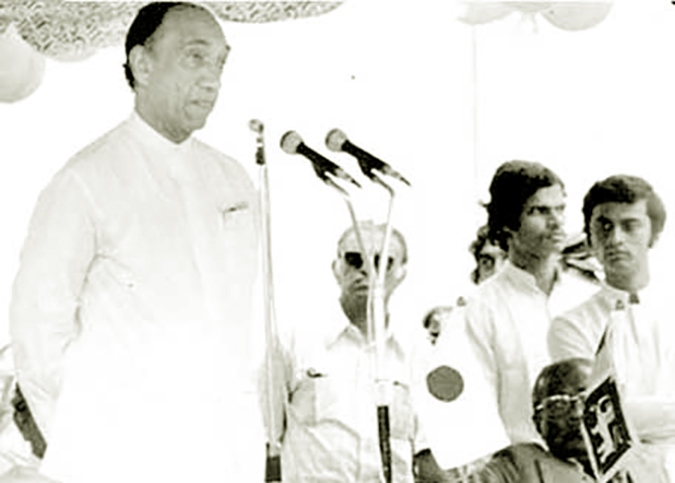
Excerpted from vol, 2 of Sarath Amunugama’s autobiography
I visited Tokyo and had discussions with the Ministry of Finance and the Nippon Electrical Corporation [NEC] to quickly begin work on our Television complex. We could save time because it was an outright grant from Japan to thank JRJ for his memorable contribution at the Peace Conference in San Francisco. At the same time another grant was awarded at JRJ’s request for a hospital which was to become today’s Sri Jayewardenepura hospital.
Here too the President acted in his inimitable manner. He was asked to decide on the number of beds for the new hospital. He inquired from the Japanese authorities about the number of beds in their largest hospital abroad. The answer was 1000. JRJ asked for 1001 beds and the nonplussed Japanese agreed subject to their own request that the 1001st bed be permanently reserved for the use of JRJ. That was the type of ‘bon homie’ that prevailed at that time. Sri Lanka was placed high on the priority lists for technical cooperation and funding in the OECD countries as later proved in the bi-lateral funding of the Mahaweli scheme.
We organized a spectacular stone laying ceremony for the TV complex under the patronage of the President at the Colombo ladies hockey grounds which now houses Rupavahini. It was also a farewell of sorts for Ambassador Ochi who was retiring amid much appreciation from his government. Ochi, representing Japan, had missed out on funding a Mahaweli dam. The UK, Germany, Canada and Sweden had agreed to undertake those projects. So TV was Ochi’s final throw of the dice.
This was his last assignment and we made it a memorable one for him. Since Japan was identified as a Buddhist country the senior priests who were connected to the SLBC came in large numbers. They were led by Baddegama Wimalawansa, Tallale Dhammananda and Hettimulle Vajirabuddhi Theros who were held in high regard among the ‘intellectual Sangha. The President made a thoughtful speech saying that “Rupavahini should be a Satyavahini”. Ambassador Ochi replied and I gave the vote of thanks ending with a few sentences in Japanese which I had memorized the night before.
Altogether it was an impressive ceremony, and the construction work began the following day. Teams of Japanese specialists were coming in regularly and with my new Minister Anandatissa’s approval I set up a steering committee of SLBC, Film Unit, Information Department and Ministry of Finance officials under my chairmanship to monitor progress weekly. A cell was set up in the Ministry to service the steering Committee. In fact it was not too complicated an operation since this was a ‘turnkey’ project, which meant that all the construction work was undertaken by the Japanese contractor who was paid direct in Tokyo. Thus the work went on without a hitch and we were working ahead of schedule.
PAL System
At this stage I had to make a crucial decision regarding the Television transmission standard. There were three models – American, French [NTSC] and German [PAL]. This referred to the transmission and reception of the TV image. The Indian Doordharshan TV which was primitive and was transmitting black and white images to limited areas was using NTSC based on a UNESCO grant. I discussed this question with the President and decided to consult Arthur Clarke who was living in Colombo and was the father of the ‘geo stationary satellite’.
A few days later Arthur called over and advised, in no uncertain terms, that we should select the PAL option. I informed the Japanese side about our choice and, despite the fact that they used NTSC in Japan, they agreed to provide the PAL system. This has been, as later proved, to be a correct decision and the country is indebted to Arthur Clarke for his forthright and timely advice.
Pidurutalagala
Another strategic decision to be made was regarding the location of TV transmitters. Though countries with a large land mass had to depend on satellites for transmitting the signal, we were fortunate in that our topography enabled us to go for a terrestrial system. This was a great advantage both in terms of costs and easy maintenance. As Arthur Clarke said, “Sri Lanka had been designed by god for TV”. With a central hill massif and the highest point of Pidurutalagala right in the centre of it, we could erect the main tower from which the signal could radiate island-wide.
It only needed two booster towers – in Kokavil in the north and Deniyaya in the south – to reach every nook and corner of the island. This configuration which had the approval of Japanese as well as SLBC engineers, some of whom like Shantilal Nanayakkara had worked as TV engineers abroad, was decided on without much difficulty. The problem however was to take the main tower to Pedro since the top was a virgin jungle with no access.
The Japanese had suggested building a road up to the top but both my Minister and I were opposed to cutting a road as that would lead to the rape of a national treasure by timber extractors and vandals. It was while pondering the problem that I tried out a far out solution which finally worked, though it seems like the ending of a Hollywood movie. I contacted the American Embassy and diverted its 7th fleet to Colombo harbour. Giant helicopters of the 7th fleet were used to airlift the TV towers to the top of Pidurutalagala. This must be recorded as a unique service of the much maligned US navy.
Independent Television Network [ITN]
While the work on the National station was proceeding satisfactorily, Anil Wijewardene and Shan Wickremesinghe were hard at work setting up their private TV station at Mahalwarawa. Shan who had studied engineering in the UK was a genius in mechanical and engineering matters and Anil took care of the administrative side of the operation. JRJ kept an avuncular eye on the family project, meeting his nephews from time to time and asking us to monitor their progress.
Their channel was named the Independent Television Network [ITN] and an American investor joined them to help expedite the project. After a couple of years they were ready to begin transmissions well ahead of the national system [Rupavahini]. ITN soon began test transmissions which were enthusiastically viewed by Colombo society. Anil had got down popular programmes like ‘Sesame Street’ and ‘Mind your Language’ which whetted our appetite for TV.
ITN then announced that they would begin regular broadcasts which would cover a wide urban area soon. Local companies then began to sell TV reception sets mostly imported from Japan. They were all globally known brands and were based on ‘state of the art’ technology. In fact the TV sets were selling in such large numbers that it was way ahead of the projections made by UNESCO and other specialized bodies. It was suggested that some of these sets may be smuggled to India as global brands were hard to come by there.
Indian television in black and white, which was geared to educating farmers, was not very popular. Expectations on ITN were running high and we all looked forward to opening day. Later I was told that Mrs. Elina Jayewardene had invited her friends to her home for tea and TV. The President himself had joined the party. Imagine everybody’s surprise, and anger, when at the appointed hour nothing appeared on their screens. Actually what they saw was a series of white lines, which gave the effect of rain, on a black screen.
Telephones started to ring at Breamar and the President was humiliated. He called Anandatissa and asked him to take over ITN and run it properly. The Minister and all of us were embarrassed because we liked Shan and Anil as young entrepreneurs. We all had to climb out of the hole that they had dug because the public which had invested in TV sets were not interested in the niceties of the blame game. They blamed the President and his Government.
We were savvy enough to know that the family will try to make amends and get the President to rescind his order for a takeover by the Ministry. For some reason, unknown to us, JRJ refused to budge. Our guess was that Mrs. Jayewardene had put her foot down. The President’s decision was a traumatic one for his kin group. Anil’s mother who was a very smart lady, was devastated by this decision. She told me that it reminded her of the traumas inflicted on her husband, Seevali, and family by the Wijewardenes many years ago. (background note – Seevali Wijewardene was ostracized by his father, DR Wijewardene over his marriage).
I replied that JRJ had nurtured this project and had given every opportunity to his young relatives. His decision was a ‘bona fide’ one as he had to face the wrath of the public, I assured her. But she was not satisfied with my explanation. She quite rightly encouraged her son and nephew to start all over again. Anil continued to provide programmes to the reconstituted ITN and the ‘never say die’ Shan worked round the clock and set up Tele Shan which later metamorphosed into the present TNL. Anil quit along the way and Shan and his daughter Ishini ran TNL.
Given the ‘hot potato’ of ITN overnight by the President we had to scramble to salvage the operation. Since we took over ITN under the SLBC Act, I with the Minister’s concurrence, decided to appoint Thevis Guruge – the Director General of SLBC – as the Competent Authority of the network. Guruge was an ideal choice because he was a key member of our Rupavahini planning cell and a veteran of radio broadcasting. He also had a reputation as a ‘go getter’ who had the confidence of his staff.
Because of this interlocking arrangement we could easily deploy the staff and finances of SLBC to get ITN moving. It also had the advantage that we could now coordinate ITN operations with the building of Rupavahini which was already ahead of schedule. Many of the early broadcasters of TV came from SLBC while its camera and editing departments were manned by veterans from the Government Film Unit.
I had sent all Departmental heads of the GFU for training in Germany and Malaysia and outstanding technicians like Leo Wickremaratne, Sanath Liyanage and Wimal Perera and Engineers like Buell and Shantilal Nanayakkara were attached to ITN. With all that talent we took a daring decision to telecast the Independence Day celebrations of 1980 from Galle Face green. SLBC announcers led by H.M. Gunasekere and Palitha Perera were on duty, and we successfully completed our mission.
My Minister and JRJ were delighted. Thanks to the take over and the skills of our personnel we were trained and ready when Rupavahini was launched in 1982. Ochi was replaced by Ambassador Chiba who was a veteran Foreign Service Officer having served in many western capitals before being assigned to Colombo. He worked very -closely with our Ministry and Rupavahini was able to broadcast before the scheduled date.
Then the question of appointing the new Chairman arose. I strongly recommended the appointment of M.J. Perera who was a veteran CCS officer and a much admired Director of Radio Ceylon in its heyday. The President and Menikdiwela were not too happy with our proposal but went along as up to now we had piloted the operation without any problems. The appointment was made but soon I began to have reservations.
I had planned to have a lean and mean administration with productions both in- house and contracted out to many new producers who could sell their wares to Rupavahini. The rise of the ‘Independents’ was the latest approach in order to introduce variety and professionalism to TV broadcasting. MJ’s approach was quite different. As he had done in his Radio Ceylon days he wanted to concentrate power in his own hands and accommodate his loyalists who were encouraged to sing his praise.
As usual he attempted to create his own ‘comfort zone’ by surrounding himself with artistes in other fields such as the Sinhala stage who were given executive positions that they were not familiar with. He expanded the administration, even going to the extent of first building an administration block to accommodate a large number of clerks who were called ‘The Horana Horde’ since many of them came from his home town.
The idea of a new style TV was abandoned for a bureaucratic monolith which to date cannot compete with the private channels which are lean and mean and making handsome profits. State TV is at the bottom of viewer ratings and its Chairmen have had to appeal to the Treasury for funds to pay its overstaffed cadres. The latest equipment donated by Japan are not utilized and corruption is rampant, as in most state Institutions. Many years later when I was an advisor to the President, I managed to change the Board but by then it was too late. State radio and television have been rejected by the audience.
Features
The Great and Little Traditions and Sri Lankan Historiography
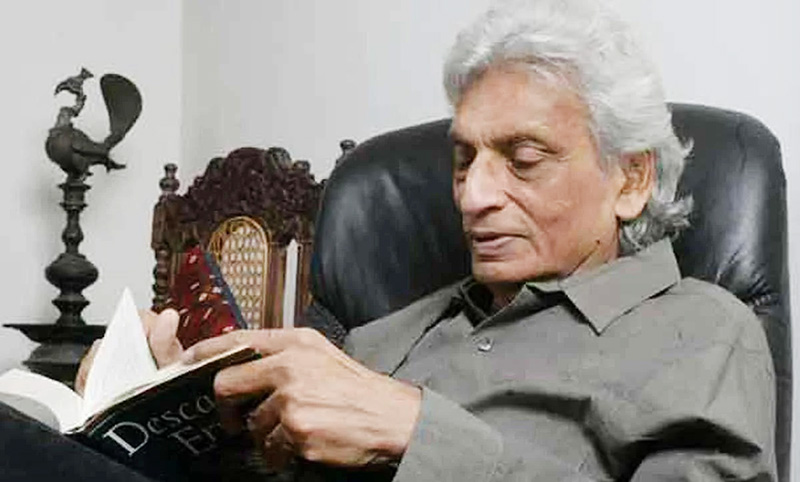
Power, Culture, and Historical Memory:
History, broadly defined, is the study of the past. It is a crucial component of the production and reproduction of culture. Studying every past event is neither feasible nor useful. Therefore, it is necessary to be selective about what to study from the countless events in the past. Deciding what to study, what to ignore, how to study, and how deeply to go into the past is a conscious choices shaped by various forms of power and authority. If studying the past is a main element of the production and reproduction of culture and History is its product, can a socially and culturally divided society truly have a common/shared History? To what extent does ‘established’ or ‘authentic’ History reflect the experiences of those remained outside the political, economic, social, and cultural power structures? Do marginalized groups have their own histories, distinct from dominant narratives? If so, how do these histories relate to ‘established’ History? Historiography today cannot ignore these questions, as they challenge the very notion of truth in History. Due to methodological shifts driven by post-positivist critiques of previously accepted assumptions, the discipline of history—particularly historiography—has moved into a new epistemological terrain.
The post-structuralism and related philosophical discourses have necessitated a critical reexamination of the established epistemological core of various social science disciplines, including history. This intellectual shift has led to a blurring of traditional disciplinary boundaries among the social sciences and the humanities. Consequently, concepts, theories, and heuristic frames developed in one discipline are increasingly being incorporated into others, fostering a process of cross-fertilization that enriches and transforms scholarly inquiry
In recent decades, the discipline of History has broadened its scope and methodologies through interactions with perspectives from the Social Sciences and Humanities. Among the many analytical tools adopted from other disciplines, the Great Tradition and Little Tradition have had a significant impact on historical methodology. This article examines how these concepts, originally developed in social anthropology, have been integrated into Sri Lankan historiography and assesses their role in deepening our understanding of the past.
The heuristic construct of the Great and Little Traditions first emerged in the context of US Social Anthropology as a tool/framework for identifying and classifying cultures. In his seminal work Peasant society and culture: an anthropological approach to civilization, (1956), Robert Redfield introduced the idea of Great and Little Traditions to explain the dual structure of cultural expression in societies, particularly in peasant communities that exist within larger civilizations. His main arguments can be summarized as follows:
a) An agrarian society cannot exist as a fully autonomous entity; rather, it is just one dimension of the broader culture in which it is embedded. Therefore, studying an agrarian society in isolation from its surrounding cultural context is neither possible nor meaningful.
b) Agrarian society, when views in isolation, is a ‘half society’, representing a partial aspect/ one dimension of the broader civilization in which it exits. In that sense, agrarian civilization is a half civilization. To fully understand agrarian society—and by extension, agrarian civilization—it is essential to examine the other half that contribute to the whole.
c) Agrarian society was shaped by the interplay of two cultural traditions within a single framework: the Great Tradition and the Little Tradition. These traditions together provided the unity that defined the civilization embedded in agrarian society.
d) The social dimensions of these cultural traditions would be the Great Society and the Little Society.
e) The Great Culture encompasses the cultural framework of the Great Society, shaped by those who establish its norms. This group includes the educated elite, clergy, theologians, and literati, whose discourse is often regarded as erudite and whose language is considered classical.
f) The social groups excluded from the “Great Society”—referred to as the “Little Society”—have their own distinct traditions and culture. The “Great Tradition” represents those who appropriate society’s surplus production, and its cultural expressions reflect this dominance. In contrast, the “Little Tradition” belongs to those who generate surplus production. While the “Great Tradition” is inherently tied to power and authority, the “Little Tradition” is not directly connected to them.
g) According to Robert Redfield, the Great and Little Traditions are not contradictory but rather distinct cultural elements within a society. The cultural totality of peasant society encompasses both traditions. As Redfield describes, they are “two currents of thought and action, distinguishable, yet overflowing into and out of each other.” (Redfield, 1956).
At the time Redfield published his book Peasant Society and Culture: an Anthropological Approach to Civilization (1956), the dominant analytical framework for studying non-Western societies was modernization theory. This perspective, which gained prominence in the post-World War II era, was deeply influenced by the US geopolitical concerns. Modernization theory became a guiding paradigm shaping research agendas in anthropology, sociology, political science, and development studies in US institutions of higher learning,
Modernization theory viewed societies as existing along a continuum between “traditional” and “modern” stages, with Western industrialized nations positioned near the modern end. Scholars working within this framework argued that economic growth, technological advancement, urbanization, and the rationalization of social structures drive traditional societies toward modernization. The theory often emphasized Western-style education, democratic institutions, and capitalist economies as essential components of this transition.
While engaging with aspects of modernization theory, Redfield offered a more nuanced perspective on non-Western societies. His concept of the “folk-urban continuum” challenged rigid dichotomies between tradition and modernity, proposing that social change occurs through complex interactions between rural and urban ways of life rather than through the simple replacement of one by the other.
The concepts of the Great and Little Traditions gained prominence in Sri Lankan social science discourse through the works of Gananath Obeyesekere, the renowned sociologist who recently passed away. In his seminal research essay, The Great Tradition and the Little in the Perspective of Sinhalese Buddhism (Journal of Asian Studies, 22, 1963), Gananath Obeyesekere applied and adapted this framework to examine key aspects of Sinhalese Buddhism in Sri Lanka. While Robert Redfield originally developed the concept in the context of agrarian societies, Obeyesekere employed it specifically to analyze Sinhala Buddhist culture, highlighting significant distinctions between the two approaches.
He identifies a phenomenon called ‘Sinhala Buddhism’, which represents a unique fusion of religious and cultural traditions: the Great Tradition (Maha Sampradaya) and the Little Traditions (Chuula Sampradaya). To fully grasp the essence of Sinhala Buddhism, it is essential to understand both of these dimensions and their interplay within society.
The Great Tradition represents the formal, institutionalized aspect of Buddhism, centered on the Three Pitakas and other classical doctrinal texts and commentaries of Theravāda Buddhism. It embodies the orthodoxy of Sinhala Buddhism, emphasizing textual authority, philosophical depth, and ethical conduct. Alongside this exists another dimension of Sinhala Buddhism known as the Little (Chuula) Tradition. This tradition reflects the popular, localized, and ritualistic expressions of Buddhism practiced by laypeople. It encompasses folk beliefs, devotional practices (Bali, Thovil), deity veneration, astrology, and rituals (Hadi and Huunium) aimed at securing worldly benefits. Unlike the doctrinally rigid Great Tradition, the Little Tradition is fluid, adaptive, and shaped by indigenous customs, ancestral practices, and even elements of Hinduism. These Sinhala Buddhist cultural practices are identified as ‘Lay-Buddhism’. Gananath Obeyesekera’s concepts and perspectives on Buddhist culture and society contributed to fostering an active intellectual discourse in society. However, the discussion on the concept of Great and Little Traditions remained largely within the domain of social anthropology.
The scholarly discourse on the concepts of Great and Little Tradition gained new socio-political depth through the work of Newton Gunasinghe, a distinguished Sri Lankan sociologist. He applied these concepts to the study of culture and socio-economic structures in the Kandyan countryside, reframing them in terms of production relations. Through his extensive writings and public lectures, Gunasinghe reinterpreted the Great and Little Tradition framework to explore the interconnections between economy, society, and culture.
Blending conventional social anthropology approach with Marxist analyses of production relations and Gramscian perspectives on culture and politics, he offered a nuanced understanding of these dynamics. In the context of our discussion, his key insights on culture, society, and modes of production can be summarized as follows.
a. The social and economic relations of the central highlands under the Kandyan Kingdom, the immediate pre-colonial social and economic order, were his focus. His analysis did not cover to the hydraulic Civilization of Sri Lanka.
b. He explored the organic and dialectical relationship between culture, forces of production, and modes of production. Drawing on the concepts of Antonio Gramsci and Louis Althusser, he examined how culture, politics, and the economy interact, identifying the relationship between cultural formations and production relations
c. Newton Gunasinghe’s unique approach to the concepts of Great Culture and Little Culture lies in his connection of cultural formations to forces and relations of production. He argues that the relationship between a society’s structures and its superstructures is both dialectical and interpenetrative.
d. He observed that during the Kandyan period, the culture associated with the Little Tradition prevailed, rather than the culture linked to the Great Tradition.
e. The limitations of productive forces led to minimal surplus generation, with a significant portion allocated to defense. The constrained resources sustained only the Little Tradition. Consequently, the predominant cultural mode in the Kandyan Kingdom was, broadly speaking, the Little Tradition.
(To be continued)
by Gamini Keerawella
Features
Celebrating 25 Years of Excellence: The Silver Jubilee of SLIIT – II
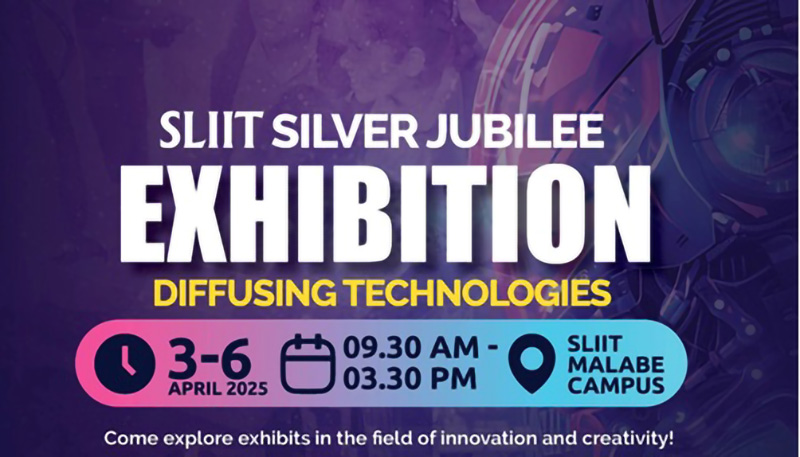
 Founded in 1999, with its main campus in Malabe and multiple centres across the country—including Metro Campus (Colombo), Matara, Kurunegala, Kandy (Pallekele), and Jaffna (Northern Uni)—SLIIT provides state-of-the-art facilities for students, now celebrating 25 years of excellence in 2025.
Founded in 1999, with its main campus in Malabe and multiple centres across the country—including Metro Campus (Colombo), Matara, Kurunegala, Kandy (Pallekele), and Jaffna (Northern Uni)—SLIIT provides state-of-the-art facilities for students, now celebrating 25 years of excellence in 2025.
Kandy Campus
SLIIT is a degree-awarding higher education institute authorised and approved by the University Grants Commission (UGC) and Ministry of Higher Education under the University Act of the Government of Sri Lanka. SLIIT is also the first Sri Lankan institute accredited by the Institution of Engineering & Technology, UK. Further, SLIIT is also a member of the Association of Commonwealth Universities (ACU) and the International Association of Universities (IAU).
Founded in 1999, with its main campus in Malabe and multiple centres across the country—including Metro Campus (Colombo), Matara, Kurunegala, Kandy (Pallekele), and Jaffna (Northern Uni)—SLIIT provides state-of-the-art facilities for students, now celebrating 25 years of excellence in 2025.
Since its inception, SLIIT has played a pivotal role in shaping the technological and educational landscape of Sri Lanka, producing graduates who have excelled in both local and global arenas. This milestone is a testament to the institution’s unwavering commitment to academic excellence, research, and industry collaboration.
Summary of SLIIT’s
History and Status
Sri Lanka Institute of Information Technology (SLIIT) operates as a company limited by guarantee, meaning it has no shareholders and reinvests all surpluses into academic and institutional development.
* Independence from Government: SLIIT was established in 1999 as an independent entity without government ownership or funding, apart from an initial industry promotion grant from the Board of Investment (BOI).
* Mahapola Trust Fund Involvement & Malabe Campus: In 2000, the Mahapola Trust Fund (MTF) agreed to support SLIIT with funding and land for the Malabe Campus. In 2015, SLIIT fully repaid MTF with interest, ending financial ties.
* True Independence (2017-Present): In 2017, SLIIT was officially delisted from any government ministry, reaffirming its status as a self-sustaining, non-state higher education institution.
Today, SLIIT is recognised for academic excellence, global collaborations, and its role in producing IT professionals in Sri Lanka
.A Journey of Growth and Innovation
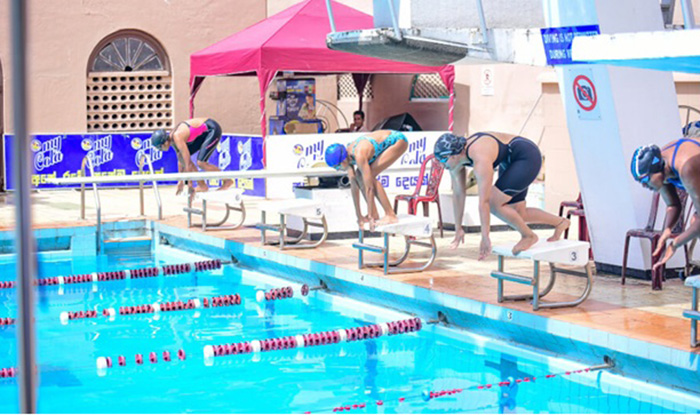
SLIIT began as a pioneering institution dedicated to advancing information technology education in Sri Lanka. Over the past two and a half decades, it has expanded its academic offerings, establishing itself as a multidisciplinary university with programmess in engineering, business, architecture, and humanities, in addition to IT. The growth of SLIIT has been marked by continuous improvement in infrastructure, faculty development, and curriculum enhancement, ensuring that students receive world-class education aligned with industry needs.
Looking Ahead: The Next 25 Years
As SLIIT celebrates its Silver Jubilee, the institution looks forward to the future with a renewed commitment to excellence. With advancements in technology, the rise of artificial intelligence, and the increasing demand for skilled professionals, SLIIT aims to further expand its academic offerings, enhance research capabilities, and continue fostering a culture of innovation. The next 25 years promise to be even more transformative, as the university aspires to make greater contributions to national and global progress.
Sports Achievements:
A Legacy of Excellence
SLIIT has not only excelled in academics but has also built a strong reputation in sports. Over the years, the university has actively promoted athletics and competitive sports by organising inter-university and inter-school competitions, fostering a culture of teamwork, discipline, and resilience. SLIIT teams have secured victories in national and inter-university competitions across various sports, including cricket, basketball, badminton, rugby, football, swimming, and athletics. SLIIT’s sports achievements reflect its dedication to holistic student development, encouraging students to excel beyond the classroom.
Kings of the pool!
Once again, our swimmers have brought glory to SLIIT by emerging as champions at the Asia Pacific Institute of Information and Technology Extravaganza Swimming Championship 2024. They won the Men’s, Women’s, and Overall Championships. Congratulations to all swimmers for their dedication and hard work in the pool, bringing honour to SLIIT.
Winning International Competitions
SLIIT students have participated in and excelled in various international competitions, including Robofest, Codefest, and the University of Queensland – Design Solution for Impact Competition, showcasing their skills and talent on a global stage.
Here’s a more detailed look at SLIIT’s involvement in international competitions:
Robofest:
SLIIT’s Faculty of Engineering organises the annual Robofest competition, which aims to empower students with skills in electronics, robotics, critical thinking, and problem-solving, preparing them to compete internationally and bring recognition to Sri Lankan talent.
Codefest:
CODEFEST is a nationwide Software Competition organized by the Faculty of Computing of Sri Lanka Institute of Information Technology (SLIIT) geared towards exhibiting the software application design and developing talents of students island-wide. It is an effort of SLIIT to elevate the entire nation’s ICT knowledge to achieve its aspiration of being the knowledge hub in Asia. CODEFEST was first organised in 2012 and this year it will be held for the 8th consecutive time in parallel with the 20th anniversary celebrations of SLIIT.
University of Queensland – Design Solution for Impact Competition:
SLIIT hosted the first-ever University of Queensland – Design Solution for Impact Competition in Sri Lanka, with 16 school teams from across the country participating.
International Open Day:
SLIIT organises an International Open Day where students can connect with distinguished lecturers and university representatives from prestigious institutions like the University of Queensland, Liverpool John Moores University, and Manchester Metropolitan University.
Brain Busters:
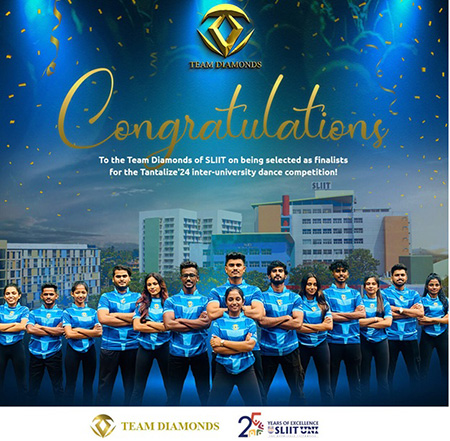
SLIIT Brain Busters is a quiz competition organised by SLIIT. The competition is open to students of National, Private and International Schools Island wide. The programme is broadcast on TV1 television as a series.
Inter-University Dance Competition:
SLIIT Team Diamonds for being selected as finalists and advancing to the Grand Finale of Tantalize 2024, the inter-university dance competition organised by APIIT Sri Lanka. The 14 talented team members from various SLIIT faculties have showcased their skills in Team Diamonds and earned their spot as finalists, competing among over 30 teams from state universities, private universities, and higher education institutes.
Softskills+
For the 11th consecutive year, Softskills+ returns with an exciting lineup of events aimed at honing essential soft skills among students. The program encompasses an interschool quiz contest and a comprehensive workshop focused on developing teamwork, problem-solving abilities, leadership qualities, and fostering creative thinking.
Recently, the Faculty of Business at SLIIT organised its annual Inter-school Quiz Competition and Soft Skills Workshop, marking its fifth successive year. Targeting students in grades 11 to 13 from Commerce streams across State, Private, and International schools, the workshop sought to ignite a passion for soft skills development, emphasising teamwork, problem-solving, creativity, and innovative thinking. Recognising the increasing importance of these soft skills in today’s workforce, the programme aims to fill the gap often left unaddressed in the school curriculum.”
The winners of the soft skill competition with Professor Lakshman Rathnayake: Chairman/Chancellor, Vice Chancellor/MD Professor Lalith Gamage, Professor Nimal Rajapakse: Senior Deputy Vice – Chancellor & Provost, Deputy Vice Chancellor – Research and International Affairs Professor Samantha Thelijjagoda, and Veteran Film Director Somarathna Dissanayake.
VogueFest 2024:
SLIIT Business School organised VogueFest 2024, a platform for emerging fashion designers under 30 to showcase their work and win prizes.
T-shirt Design Competition with Sheffield Hallam University:
SLIIT and Sheffield Hallam University (SHU) UK collaborated on a T-shirt designing competition, with a voting procedure to select the best design.
SLIIT’s Got Talent
: The annual talent show, SLIIT’s Got Talent 2024, was held for the 10th consecutive year at the Nelum Pokuna Mahinda Rajapaksa Theatre on 27th September 2024. SLIIT’s Got Talent had the audience energised with amazing performances, showcasing mind-blowing talent by the orchestra and the talented undergraduates from all faculties.
Other events:
* SLIIT also participates in events like the EDUVision Exhibition organised by the Richmond College Old Boys’ Association.
* They hosted the first-ever University of Queensland – Design Solution for Impact Competition in Sri Lanka.
* SLIIT Business School also organised the Business Proposal Competition.
SLIIT Academy:
SLIIT Academy (Pvt.) Ltd. provides industrial-oriented learning experiences for students.
International Partnerships:
SLIIT has strong international partnerships with universities like Liverpool John Moores University (LJMU), The University of Queensland (UQ), Manchester Metropolitan University (MMU), and Curtin University Australia, providing opportunities for students to study and participate in international events.
(The writer, a senior Chartered Accountant and professional banker, is Professor at SLIIT University, Malabe. He is also the author of the “Doing Social Research and Publishing Results”, a Springer publication (Singapore), and “Samaja Gaveshakaya (in Sinhala).
Features
Inescapable need to deal with the past
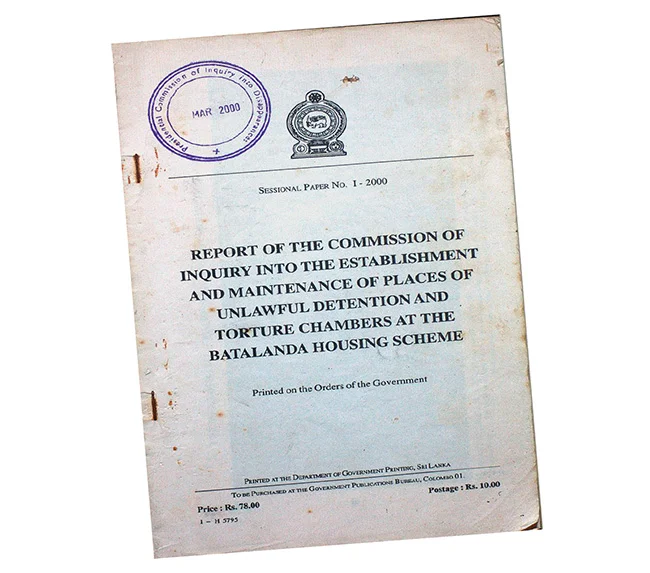
The sudden reemergence of two major incidents from the past, that had become peripheral to the concerns of people today, has jolted the national polity and come to its centre stage. These are the interview by former president Ranil Wickremesinghe with the Al Jazeera television station that elicited the Batalanda issue and now the sanctioning of three former military commanders of the Sri Lankan armed forces and an LTTE commander, who switched sides and joined the government. The key lesson that these two incidents give is that allegations of mass crimes, whether they arise nationally or internationally, have to be dealt with at some time or the other. If they are not, they continue to fester beneath the surface until they rise again in a most unexpected way and when they may be more difficult to deal with.
In the case of the Batalanda interrogation site, the sudden reemergence of issues that seemed buried in the past has given rise to conjecture. The Batalanda issue, which goes back 37 years, was never totally off the radar. But after the last of the commission reports of the JVP period had been published over two decades ago, this matter was no longer at the forefront of public consciousness. Most of those in the younger generations who were too young to know what happened at that time, or born afterwards, would scarcely have any idea of what happened at Batalanda. But once the issue of human rights violations surfaced on Al Jazeera television they have come to occupy centre stage. From the day the former president gave his fateful interview there are commentaries on it both in the mainstream media and on social media.
There seems to be a sustained effort to keep the issue alive. The issues of Batalanda provide good fodder to politicians who are campaigning for election at the forthcoming Local Government elections on May 6. It is notable that the publicity on what transpired at Batalanda provides a way in which the outcome of the forthcoming local government elections in the worst affected parts of the country may be swayed. The problem is that the main contesting political parties are liable to be accused of participation in the JVP insurrection or its suppression or both. This may account for the widening of the scope of the allegations to include other sites such as Matale.
POLITICAL IMPERATIVES
The emergence at this time of the human rights violations and war crimes that took place during the LTTE war have their own political reasons, though these are external. The pursuit of truth and accountability must be universal and free from political motivations. Justice cannot be applied selectively. While human rights violations and war crimes call for universal standards that are applicable to all including those being committed at this time in Gaza and Ukraine, political imperatives influence what is surfaced. The sanctioning of the four military commanders by the UK government has been justified by the UK government minister concerned as being the fulfilment of an election pledge that he had made to his constituents. It is notable that the countries at the forefront of justice for Sri Lanka have large Tamil Diasporas that act as vote banks. It usually takes long time to prosecute human rights violations internationally whether it be in South America or East Timor and diasporas have the staying power and resources to keep going on.
In its response to the sanctions placed on the military commanders, the government’s position is that such unilateral decisions by foreign government are not helpful and complicate the task of national reconciliation. It has faced criticism for its restrained response, with some expecting a more forceful rebuttal against the international community. However, the NPP government is not the first to have had to face such problems. The sanctioning of military commanders and even of former presidents has taken place during the periods of previous governments. One of the former commanders who has been sanctioned by the UK government at this time was also sanctioned by the US government in 2020. This was followed by the Canadian government which sanctioned two former presidents in 2023. Neither of the two governments in power at that time took visibly stronger stands.
In addition, resolutions on Sri Lanka have been a regular occurrence and have been passed over the Sri Lankan government’s opposition since 2012. Apart from the very first vote that took place in 2009 when the government promised to take necessary action to deal with the human rights violations of the past, and won that vote, the government has lost every succeeding vote with the margins of defeat becoming bigger and bigger. This process has now culminated in an evidence gathering unit being set up in Geneva to collect evidence of human rights violations in Sri Lanka that is on offer to international governments to use. This is not a safe situation for Sri Lankan leaders to be in as they can be taken before international courts in foreign countries. It is important for Sri Lanka’s sovereignty and dignity as a country that this trend comes to an end.
COMPREHENSIVE SOLUTION
A peaceful future for Sri Lanka requires a multi-dimensional approach that addresses the root causes of conflict while fostering reconciliation, justice, and inclusive development. So far the government’s response to the international pressures is to indicate that it will strengthen the internal mechanisms already in place like the Office on Missing Persons and in addition to set up a truth and reconciliation commission. The difficulty that the government will face is to obtain a national consensus behind this truth and reconciliation commission. Tamil parties and victims’ groups in particular have voiced scepticism about the value of this mechanism. They have seen commissions come and commissions go. Sinhalese nationalist parties are also highly critical of the need for such commissions. As the Nawaz Commission appointed to identify the recommendations of previous commissions observed, “Our island nation has had a surfeit of commissions. Many witnesses who testified before this commission narrated their disappointment of going before previous commissions and achieving nothing in return.”
Former minister Prof G L Peiris has written a detailed critique of the proposed truth and reconciliation law that the previous government prepared but did not present to parliament.
In his critique, Prof Peiris had drawn from the South African truth and reconciliation commission which is the best known and most thoroughly implemented one in the world. He points out that the South African commission had a mandate to cover the entire country and not only some parts of it like the Sri Lankan law proposes. The need for a Sri Lankan truth and reconciliation commission to cover the entire country and not only the north and east is clear in the reemergence of the Batalanda issue. Serious human rights violations have occurred in all parts of the country, and to those from all ethnic and religious communities, and not only in the north and east.
Dealing with the past can only be successful in the context of a “system change” in which there is mutual agreement about the future. The longer this is delayed, the more scepticism will grow among victims and the broader public about the government’s commitment to a solution. The important feature of the South African commission was that it was part of a larger political process aimed to build national consensus through a long and strenuous process of consultations. The ultimate goal of the South African reconciliation process was a comprehensive political settlement that included power-sharing between racial groups and accountability measures that facilitated healing for all sides. If Sri Lanka is to achieve genuine reconciliation, it is necessary to learn from these experiences and take decisive steps to address past injustices in a manner that fosters lasting national unity. A peaceful Sri Lanka is possible if the government, opposition and people commit to truth, justice and inclusivity.
by Jehan Perera
-
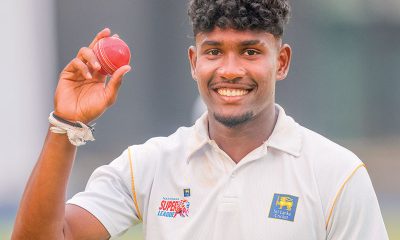
 Sports4 days ago
Sports4 days agoSri Lanka’s eternal search for the elusive all-rounder
-
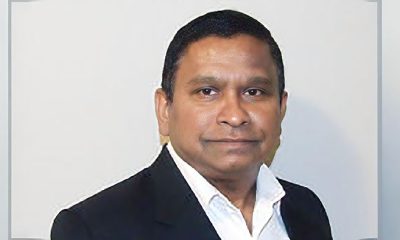
 News3 days ago
News3 days agoBid to include genocide allegation against Sri Lanka in Canada’s school curriculum thwarted
-
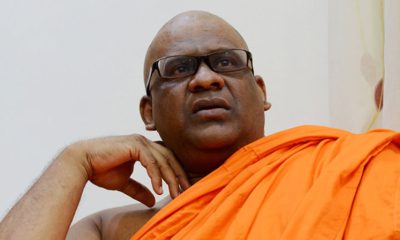
 News5 days ago
News5 days agoGnanasara Thera urged to reveal masterminds behind Easter Sunday terror attacks
-
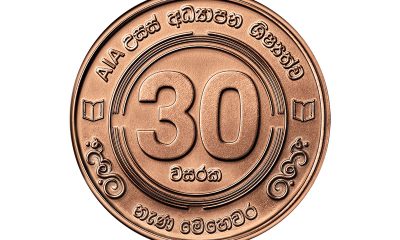
 Business6 days ago
Business6 days agoAIA Higher Education Scholarships Programme celebrating 30-year journey
-
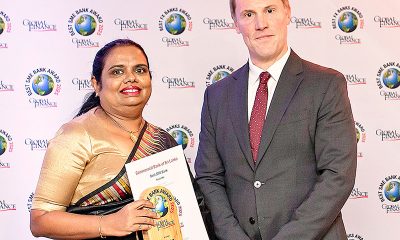
 News4 days ago
News4 days agoComBank crowned Global Finance Best SME Bank in Sri Lanka for 3rd successive year
-
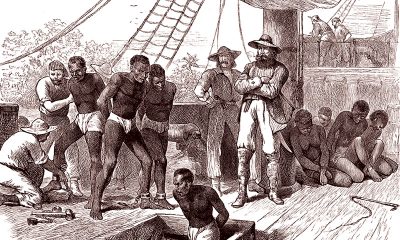
 Features4 days ago
Features4 days agoSanctions by The Unpunished
-
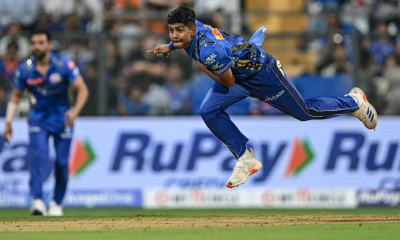
 Latest News2 days ago
Latest News2 days agoIPL 2025: Rookies Ashwani and Rickelton lead Mumbai Indians to first win
-
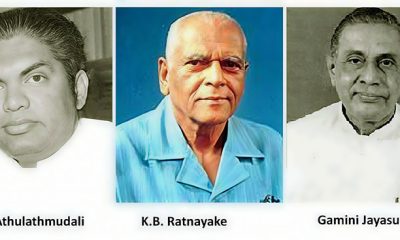
 Features4 days ago
Features4 days agoMore parliamentary giants I was privileged to know











